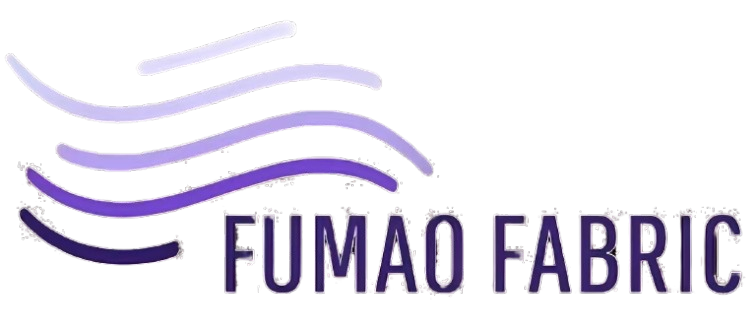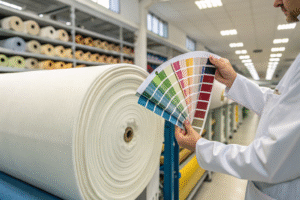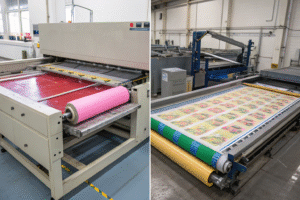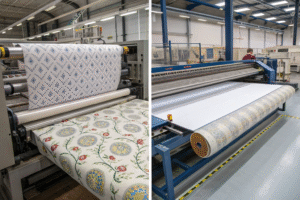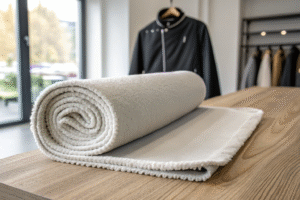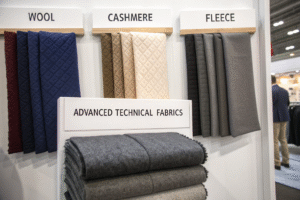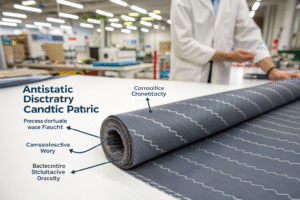Promotional uniforms are more than just workwear—they’re brand billboards. Whether it's a field marketing polo or a tradeshow staff jacket, the colors must stay vibrant to keep your brand looking sharp. But there’s a common issue: fading. Sun exposure, washing, and wear can dull colors and ruin uniform integrity. For brands ordering from us, especially in the U.S. or Europe, one of the most frequent requests is, "Which fabric won’t fade after five washes or a summer of events?"
Fade-resistant fabrics are essential for promotional uniforms to maintain color brilliance under UV light, laundering, and sweat exposure. Polyester blends, solution-dyed synthetics, and certain treated cottons offer the best long-term results. With fabric choices directly impacting uniform lifespan and brand perception, this decision is more than aesthetic—it’s strategic.
In this guide, I’ll walk you through the best fade-resistant fabric options we recommend to global buyers, based on years of exporting promotional textiles.
Which Synthetic Fabrics Offer Superior Fade Resistance?
Synthetic fabrics dominate the promotional uniform space for a reason—they resist fading better than most natural options. Thanks to their fiber structure and dye compatibility, they hold color longer even under UV or bleach.
Solution-dyed polyester and acrylic fabrics are widely regarded as the most fade-resistant options for vibrant promotional uniforms, especially for outdoor or high-laundering use.

Why Is Polyester the Standard in Promotional Apparel?
Polyester resists moisture, stretches slightly, and most importantly—holds dye well. Especially when using disperse dyes, polyester fibers lock in pigment during high-heat dyeing, creating durable colorfastness.
Brands like Port Authority and SanMar prefer 100% polyester polos and outerwear for company branding. According to Apparel Search, polyester’s resistance to UV and sweat makes it ideal for uniforms worn under sunlight or heat.
What Is Solution Dyeing and Why Does It Outperform?
Unlike conventional dyeing, solution dyeing adds pigment directly into the polymer before the fiber is even formed. This results in yarns that are colored throughout—not just surface-dyed.
Solution-dyed acrylic and polyester are used in marine, military, and hospitality textiles. Companies like Sunbrella and Perennials Fabrics use this method to produce colorfast outdoor fabrics. For uniforms, it means less fading and consistent branding colors across orders.
How Do Blends Like Poly-Cotton Perform Over Time?
Blended fabrics provide a balance of comfort and performance. While not as colorfast as 100% synthetics, poly-cotton blends still perform well with proper dyeing and finishing.
Poly-cotton blends offer a cost-effective fade-resistant solution for promotional wear, combining cotton’s comfort with polyester’s durability—ideal for large-scale branded programs.

Are Poly-Cotton T-Shirts Suitable for Daily Uniforms?
Yes. Poly-cotton (often in 65/35 or 50/50 ratios) is widely used in uniform t-shirts, especially for indoor or short-term promotional events. While cotton may fade over time, polyester content slows this process.
Leading suppliers like Gildan and Next Level Apparel offer poly-blend options specifically labeled for print quality and fade resistance. These are used across industries from retail to catering.
What Fabric Finishes Help Improve Color Retention?
Anti-fade or color-lock finishes applied during post-processing enhance fabric’s resistance to bleach, UV, and friction. At Fumao Fabric, we use silicone softening and resin coating to stabilize the dyes in our poly-blends.
According to American Association of Textile Chemists and Colorists (AATCC), testing methods like AATCC TM61 (laundering) and TM16 (light exposure) measure a fabric's fade durability. Always ask your supplier for test data aligned with these standards.
What Testing Standards Prove Fade Resistance?
Any claim of fade resistance must be backed by test data. We at Fumao ensure our promotional uniform fabrics pass global standards for colorfastness.
Key tests like AATCC 16, ISO 105-B02, and ISO 105-C06 evaluate color retention against light, washing, and rubbing—crucial for real-world uniform performance.

What Are the Global Testing Methods for Fading?
- AATCC 16 – Assesses lightfastness
- AATCC 61 – Simulates laundering with detergent and bleach
- ISO 105-B02 – Lightfastness under xenon arc lamp
- ISO 105-C06 – Domestic and commercial laundering resistance
Labs like Intertek and SGS provide colorfastness test reports. When you work with certified mills, ask for documentation referencing these standards with ≥4 grade results (on a 1–5 gray scale, 5 being best).
Can QR-Based QC Systems Track Fade Results?
Yes. At Fumao, every dye lot and production batch is tagged with a QR code linking to its colorfastness test results and composition. This lets buyers verify fade resistance before shipment.
Suppliers like Datacolor offer spectrophotometers and QC software to detect even 0.1 ΔE differences—ensuring repeat orders stay true in color, especially across multiple uniform programs.
What Are the Best Practices When Sourcing Fade-Proof Uniform Fabric?
Fade-resistance isn’t just about fiber—it’s about dye, finish, testing, and supplier experience. Making the right sourcing decisions prevents costly returns or rebranding.
Work with verified mills, request certified colorfastness results, and choose fibers and finishes proven to last under your uniform’s intended environment.

What Questions Should You Ask a Fabric Supplier?
- What dyeing method is used?
- Do you have AATCC/ISO colorfastness test results?
- Is the fabric pre-treated or post-finished?
- Can you offer solution-dyed or UV-stabilized options?
We always advise clients to test samples under their end-use conditions. A poly shirt used indoors in New York fades differently from one worn outdoors in Arizona. See platforms like Maker’s Row and Sourcing Journal for additional sourcing checklists.
How to Ensure Long-Term Color Consistency?
Request lab dips for each production run. Use Pantone TCX references, and ensure delta-E deviations are under 1.5 for consistent color matching. Color deviations lead to rebranding issues and customer complaints.
Brands working with partners like Custom Ink or Printify understand the need for visual consistency across batches. That's why we maintain detailed shade cards and retain dyed lab dips for 24 months.
Conclusion
Fading fabric means fading brand value. Whether you're outfitting trade show teams or retail crews, choosing the right fade-resistant fabric ensures that your uniforms maintain a crisp, consistent, and confident look throughout their lifecycle. From polyester and solution-dyed synthetics to tested poly-cotton blends, options abound—if you know what to ask for. At Fumao Fabric, we guide clients through these decisions with lab-tested options, QR-linked QC, and smart fabric engineering for uniforms that don’t fade away when the spotlight hits.
